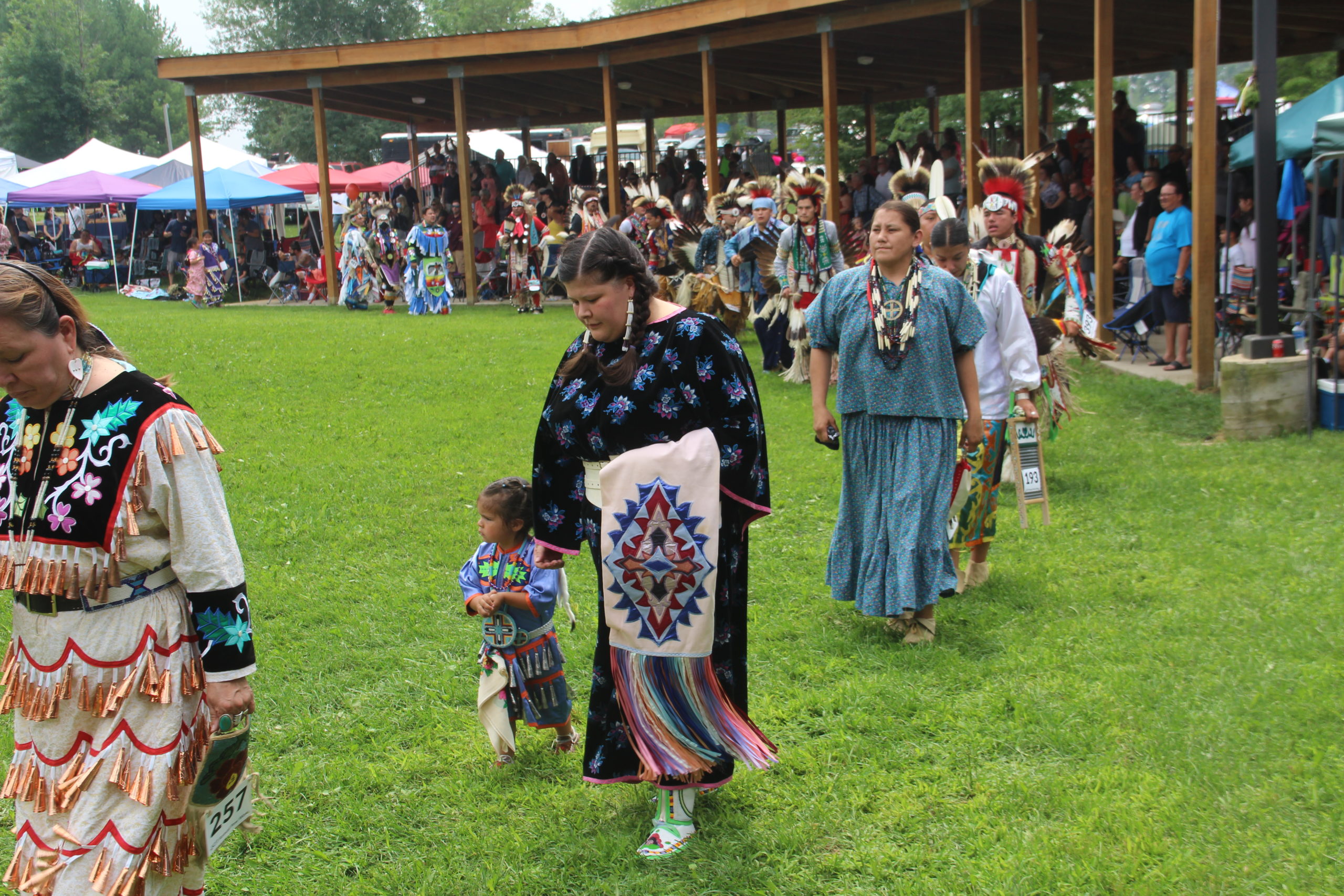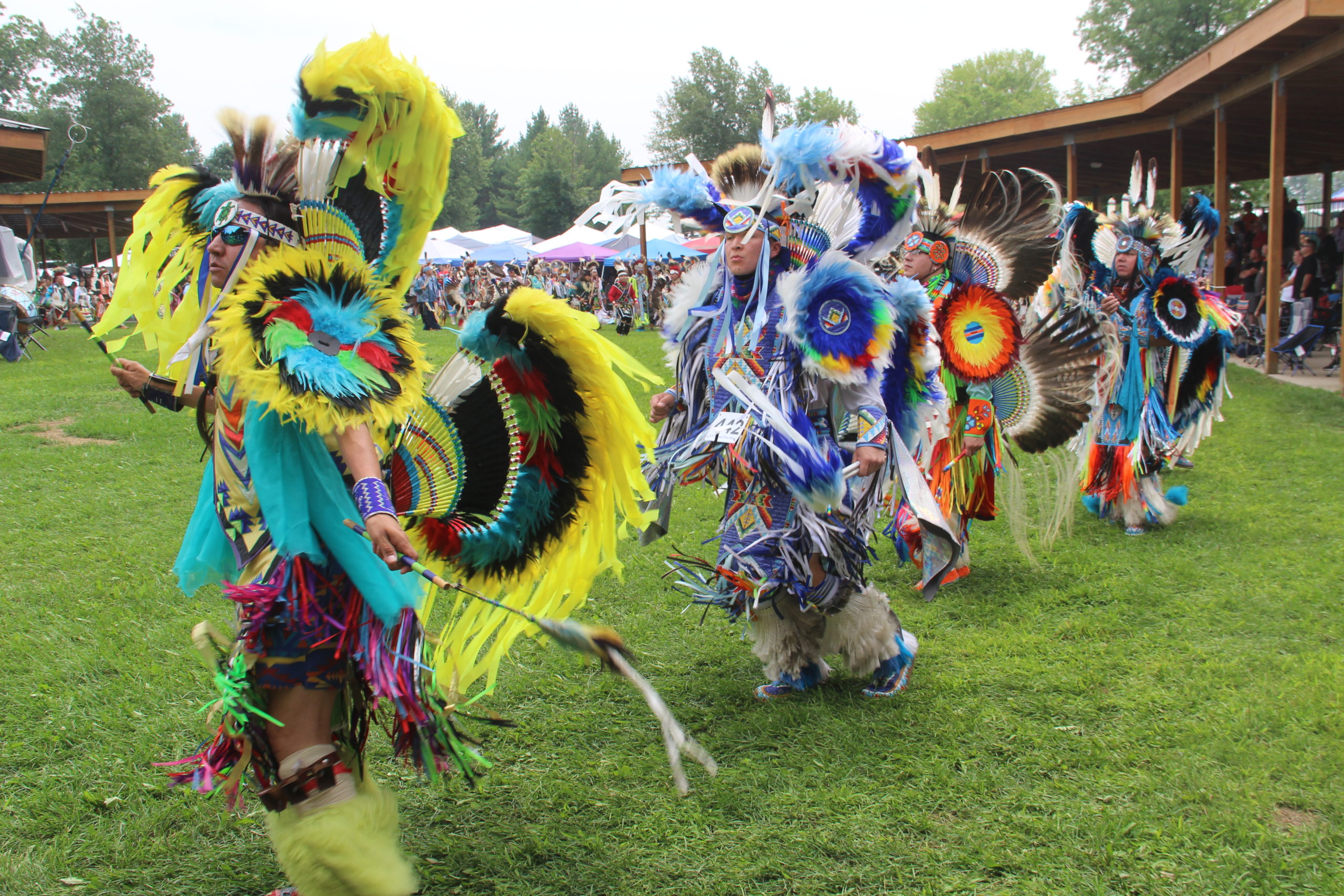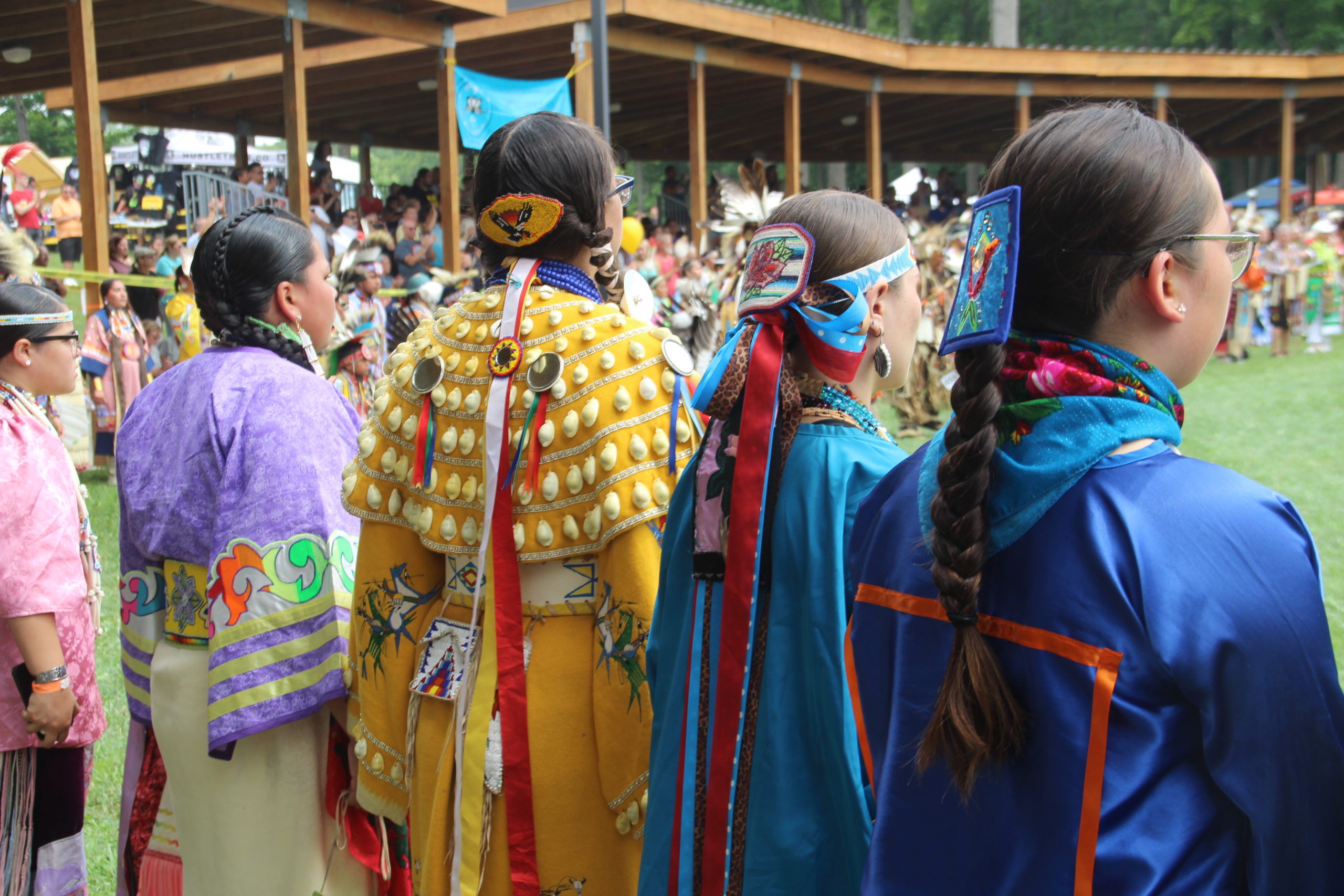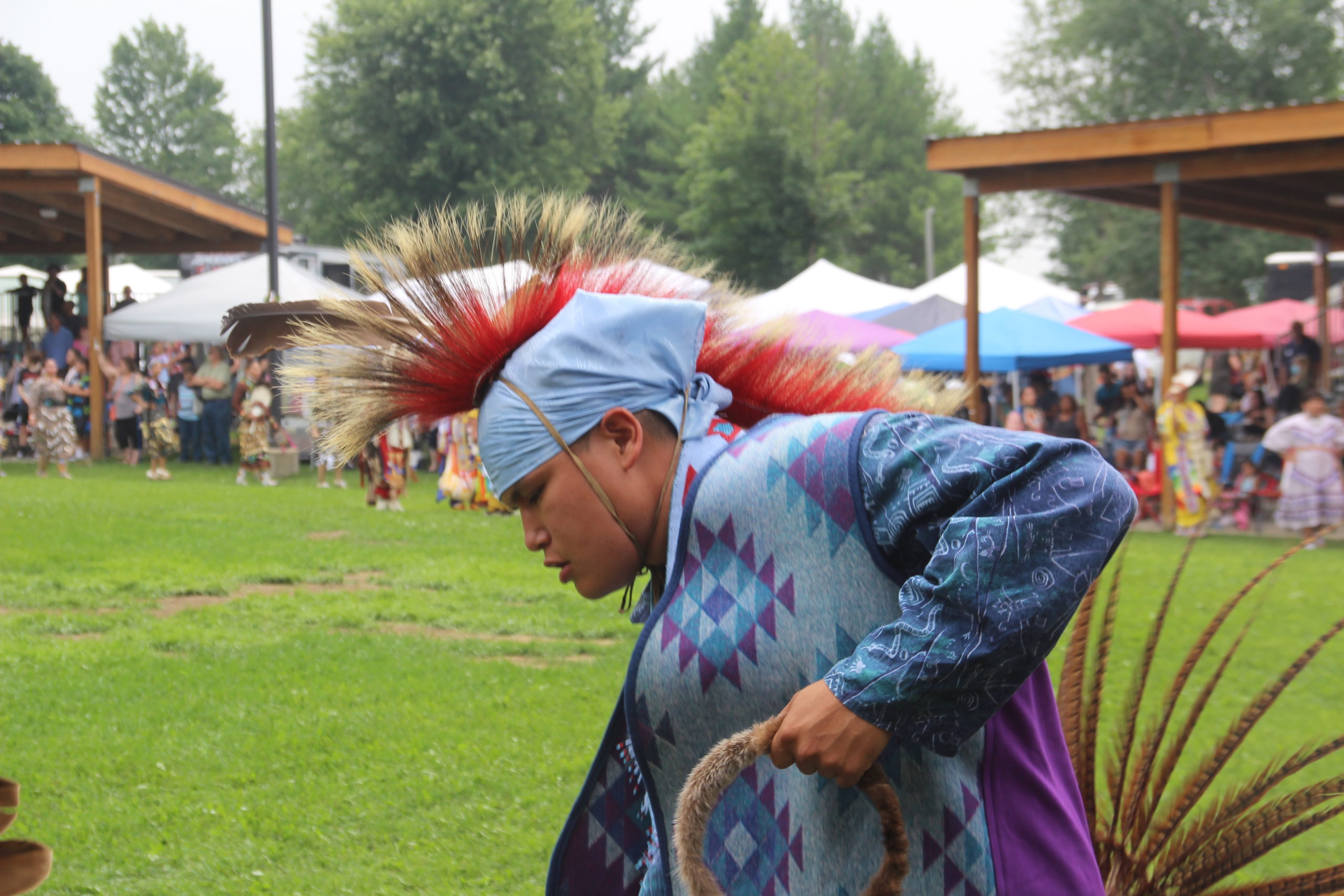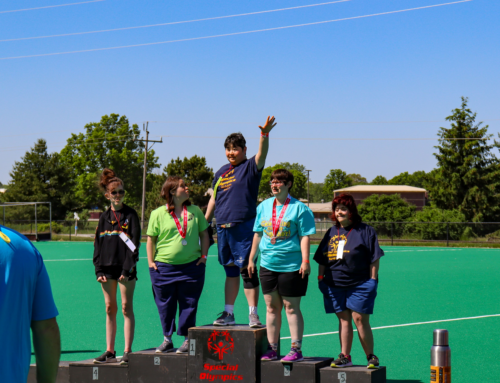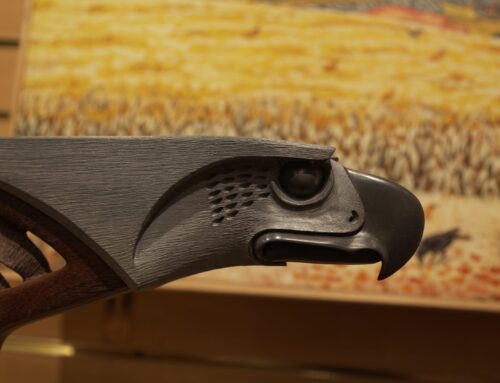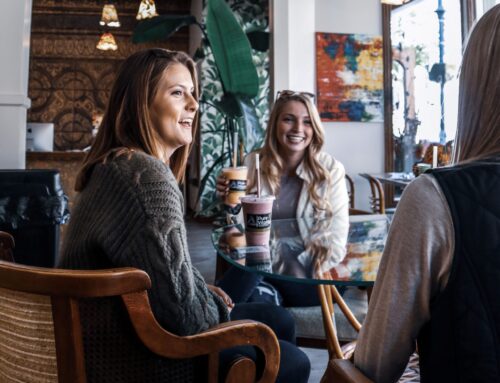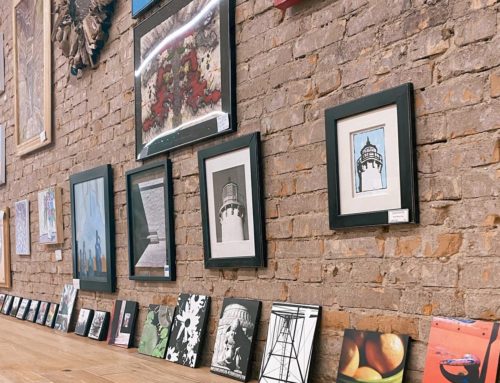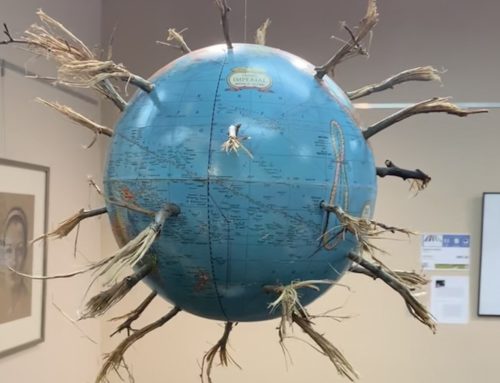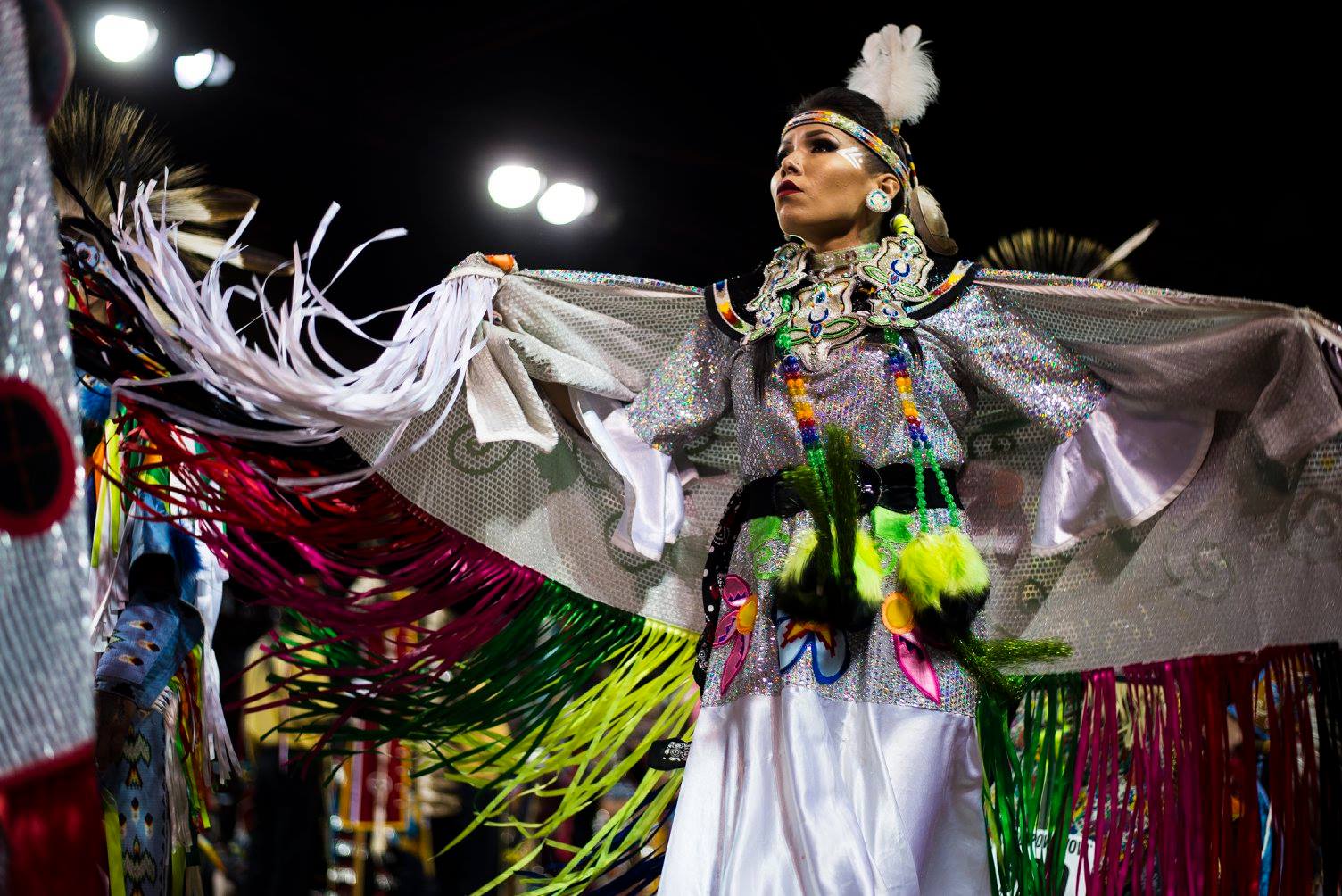
For over 35 years, the Saginaw Chippewa Indian Tribe has hosted their annual Powwow every summer on their tribal grounds in Mt. Pleasant. Powwows serve to maintain and celebrate culture of the Indigenous People and are events where cultural persistence, cohesion, and ritual are celebrated through song, dance, and other social interactions.
The Saginaw Chippewa Indian Tribe of Michigan is made of three Ojibwe bands; Saginaw, Black River, and Swan Creek. They originally lived in southern and Midwestern areas of what is today’s State of Michigan, as well as some parts of what is now Canada. But now tribal land is concentrated near the cities of Mt. Pleasant and Pinconning. In 1864, the Isabella Indian Reservation was established in Mt. Pleasant.
Throughout the 1700s and 1800s, treaties between the young American government and the Saginaw bands compressed the land base allowed for the Tribe’s normal pursuits. This was until 1837, when all remaining land was gone. By 1864, the Saginaw lands were formally surrendered, with all Tribal members offered land in Isabella County. Many decades later in the 1930s, the tribe needed to be reorganized under the Federal Indian Reorganization Act. This is when the Tribe officially became the Saginaw Chippewa Indian Tribe of Michigan.
What to Expect: Powwow Etiquette
It is important to understand the etiquette while attending a Powwow as to not disrupt the flow of the event and to be respectful. One of the most important and basic guidelines of a powwow is to be on time, and to dress and behave appropriately while attending. Pointing with fingers could be considered poor manners by some nations, so it is best to nod your head in the direction you wish to indicate. It is also important to note that seating around the arena is reserved for dancers in regalia, and seats with blankets, shawls, or regalia items on them are taken and should not be bothered. Instead, try to find an uncovered seat that would be considered available. Unless you are sure spectator seating will be provided, it’s best to bring your own chair.
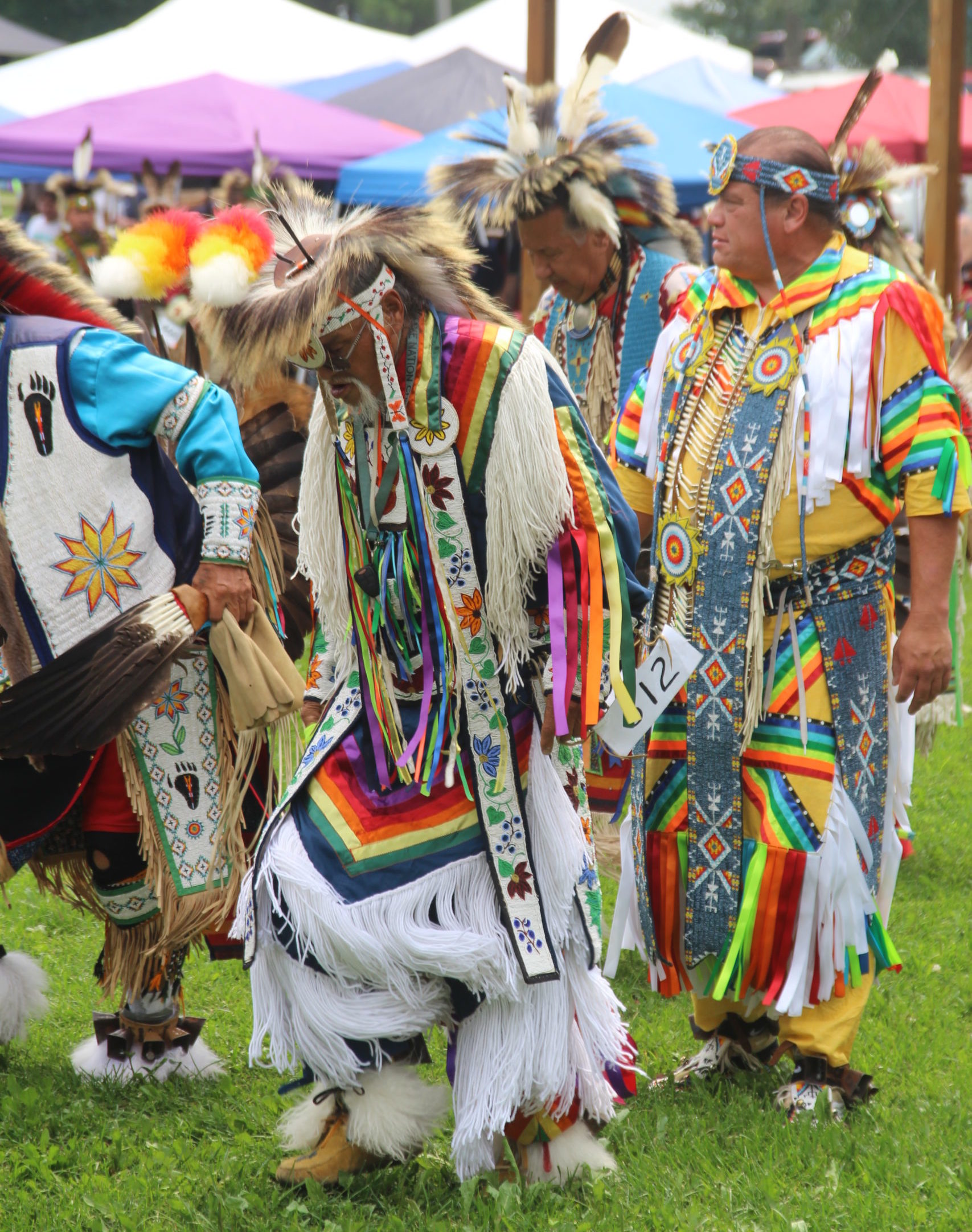
It is important to understand the etiquette while attending a Powwow as to not disrupt the flow of the event and to be respectful. One of the most important and basic guidelines of a powwow is to be on time, and to dress and behave appropriately while attending. Pointing with fingers could be considered poor manners by some nations, so it is best to nod your head in the direction you wish to indicate. It is also important to note that seating around the arena is reserved for dancers in regalia, and seats with blankets, shawls, or regalia items on them are taken and should not be bothered. Instead, try to find an uncovered seat that would be considered available. Unless you are sure spectator seating will be provided, it’s best to bring your own chair.
The role of the head male and female dancers entitles them to start each song or set of songs. It’s imperative to wait until they have started to dance before joining in. Be aware that some songs require you to be familiar with the routine or have special eligibility rules in order to participate. For instance, veteran dances may be restricted to veterans, combat veterans, or in some cases, the relations of veterans. When this happens, it is best to observe and learn, and watch the head dancers to learn the procedures.
Most powwows are nonprofit and rely on donations, raffles, blanket dancers, as well as other types of donations for support. They are encouraged as a way to honor someone, and any participant can drop money onto the blanket to aid with powwow expenses.
Always ask permission before taking pictures of dancers, but no pictures may be taken during dedication dances (Veterans songs, flag songs or prayers). These special songs will be announced by the emcee, so be sure to always be listening. The emcee will give all of the information you need, and any questions a person may have can be answered by them. They will also let you know when it is proper etiquette to stand and when to sit after honor songs, as well as announce intertribal dances and other invitations for guests to participate.
Most importantly, if you have a question, ask. Most dancers, singers, elders and staff are happy to help! You can offer a cold drink or other small, symbolic gifts to those who help you.
Here is a list of more powwow guidelines that all attendees should be aware of before attending a powwow:
- If you come across a lost feather, do not pick it up. Instead, notify the nearest veteran, the head veteran, head male dancer or arena director immediately.
- No pets are allowed, as the arena is a sacred place from the time it is blessed until the powwow is over.
- No alcohol, recreational drugs, or firearms are allowed at any powwow.
- Always stand and remove hats during special songs.
- Certain items of religious significance should be worn only by those qualified to do so.
- Giveaways, attributes of Indian generosity, are held at many dances.
- If you wish to ask for a special song from a drum, talk to the arena director first and make sure the master of ceremonies is informed.
- Do not sit in the drumming area without special permission.
- In some places it is okay for adults to dance while carrying infants or small children. In other places this is considered contrary to local etiquette, so ask before doing so.
- Supervise your children so that all may enjoy the event without distraction.
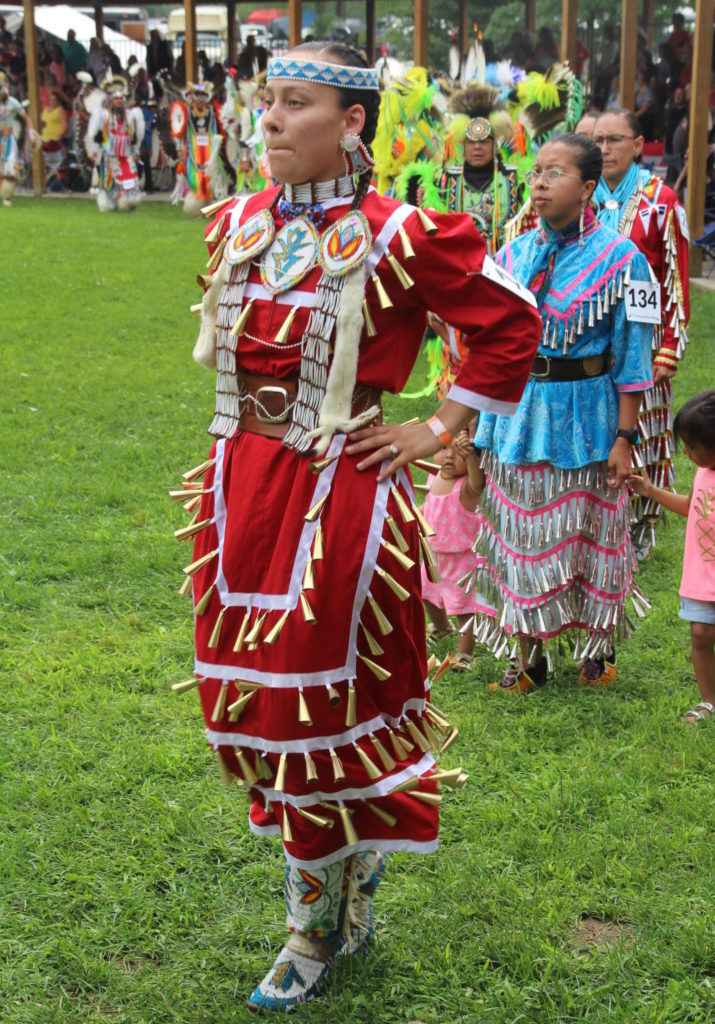
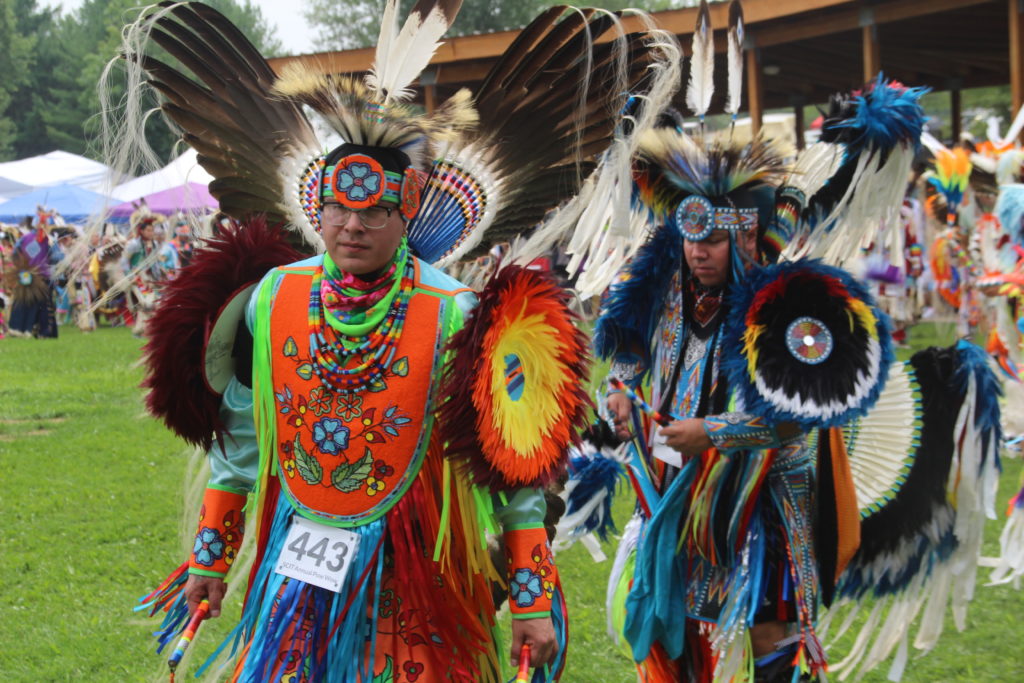
The Six Main Ojibwe Dancing Styles
The Tribe hosts a contest Powwow where dancers must register to compete, are assigned numbers, and perform their dance for judges. Contest Powwows have various Native American dance styles including Women’s Jingle, Fancy Shawl Dance, Women’s Traditional, Men’s Fancy, Men’s Grass, and Men’s Traditional.
Women’s Jingle
Dancer’s dresses in the Women’s Jingle are covered from head to foot in tin cones, and movements are bouncy and energetic. This causes the jingling of the dresses as the movement matches the beat of the drum, providing a constant rhythmic accompaniment to each song. Each step that these dancers take represents a prayer for a sick friend or relative, and to be a jingle dress dancer, you must have dreamt about being one. The dress is made of cloth and is covered in 365 cones – each representing a prayer for each day of the year. When she dances, she uses her fan in a sweeping motion to wave away sickness.
Fancy Shawl Dance
This exuberant and delightful dance represents the life of a butterfly, and is unquestionably the flashiest of the women’s dancing styles. The dresses and decorative beaded accessories are vividly colorful and match the most outstanding feature of these dancers’ outfits, the shawls. These graceful, brightly-fringed shawls drape the young women’s shoulders and perfectly compliment the twirling, prancing, pirouetting steps of this showy, high-spirited dance. The word “fancy” in the name of this dance actually refers to the footwork, not the shawl.
Women’s Traditional
The Women’s Traditional dance is a slower, more tranquil dance. Although the women may move slowly about the circle of the arena, often they will simply stand in the same place as they rhythmically dip and sway to the beat of the drummers. Dancer’s are dressed in heavily and elaborately decorated outfits, and may be sewn of buckskin leather or of various types of fabric. Beadwork and sometimes porcupine quills, elk ivory and cowry shells adorn the outfit. Their colors tend to be gentler and more subdued compared to those of other women’s dance styles.
Men’s Fancy
With its rapid tempo and high power, Men’s Fancy dance may be one of the most easily recognizable Ojibwe Dance’s. Colorful and distinctive regalia features two very large, vividly colored double bustles, worn on the dancer’s back. Smaller bustles may also be worn on the arms as well as brightly colored bead work and accessories. With quick but graceful steps, the men in this dance are some of the most energetic of all the powwow dancers.
Men’s Grass
Similar to the Men’s Fancy, the Men’s Grass dance is easily recognizable by its striking regalia. Dancers are covered shoulder to ankle in long, thick flows of bright, multicolored cloth fringe that is made to represent grass. This dance is fittingly named, and it symbolizes the young men of western tribes who were to stomp down the tall grass of the plains so the people could use the area. What originally started out as sweet grass hung from the regalia is now long, flowing yarn fringe. Dance movements in the Men’s Grass are also distinctive for their sliding, shaking and spinning motion, rather than the high, kicking steps of the fancy dancer.
Men’s Traditional
Traditional dancing is an opportunity for men to dance in the way of their fathers and grandfathers. A traditional dancer’s regalia likely reflects tribal affiliation, and their ensemble may frequently include pieces handed down for generations within the family. These may range from a look of dignified simplicity to dramatically elaborate. A traditional dance style is not as flashy and exuberant as other men’s styles, but more elaborate, expressive and powerful – similar to the outfit itself
Where to Learn More About the Saginaw Chippewa Indian Tribe
The Saginaw Chippewa Indian Tribe continues to provide and enhance culture in the Mt. Pleasant area as well as foster education on Indigenous Americans. To learn more about the Saginaw Chippewa Indian Tribe, head on over to their website where you can find information regarding their government, services, culture, and other events! Thank you to the Saginaw Chippewa Indian Tribe for taking the time to provide the
Mt. Pleasant Area CVB with information regarding the Annual Saginaw Chippewa Powwow.
Meet Mt. Pleasant
To learn more about other events happening in the Mt. Pleasant area, click here. Be sure to follow us on Facebook, Instagram and Twitter to stay up-to-date on all things Mt. Pleasant!
Information Sources: Aicinena, S., & Ziyanak, S. (2021). Contest Powwow: Sport and Native American Culture. The Qualitative Report. https://doi.org/10.46743/2160-3715/2021.4517 & Brief history of the Saginaw Chippewa Indian tribal culture. Saginaw Chippewa Indian Tribe of Michigan Homepage. (n.d.). http://www.sagchip.org/culture/#.YQCp4Y5Kg2w.
All photos are provided by the Saginaw Chippewa Indian Tribe of Michigan.



